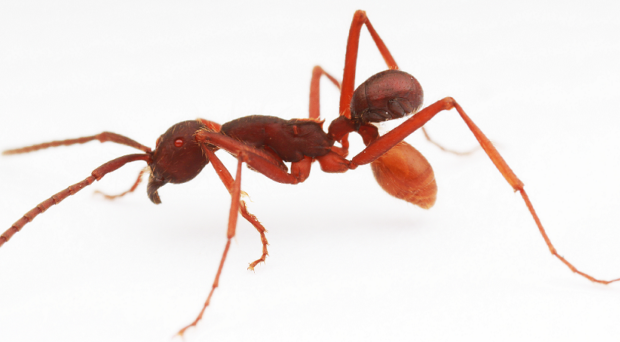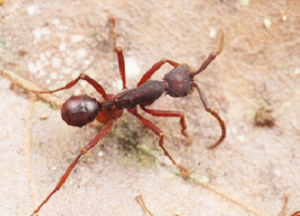
Symbiotic relationships play a crucial role in ecological systems. While some relationships cause harm to a species — e.g. mosquitoes feeding on organisms — others are necessary for organisms to survive. As one of the more pervasive insect groups, ants are engaged in a vast range of symbiotic relationships. Army ants in particular serve as hosts to a diverse set of myrmecophiles (ant-loving species). It is believed that this is largely due to the army ant’s ability to gather large amounts of quality food, which attracts organisms to associate with the ant.
Army ants are a nomadic species that alternate between stages of traveling every night, and remaining at one nest site. Their nomadic lifestyle forces myrmecophiles to follow the ant colonies between sites. Beetles are among the organisms to associate with these army ant populations. They utilize various mechanisms that enable them to coexist with the army ants, including the release of chemical compounds and the display of protective body features among many. A new article published in BMC Zoology describes a new beetle species that travels on the backs of army ants, and investigates the mechanism by which this is accomplished.

The unique attachment mechanism
This new species, Nymphister kronaueri (pictured above), was discovered in the rainforest at La Selva Biological Station (LSBS) in Costa Rica. The researchers for this study collected samples of the beetles along with the ants to which they were attached, and studied them further through morphological and genetic analysis. Through their analyses, these researchers were able to describe the unique method employed by these beetles that enables them to “hitchhike” with the nomadic army ants.
To attach to the host ant, the beetle tightly grips the ant’s body between the thorax and the abdomen (the two petiolar nodes) using its long, unique mandible. They are very particular about which part of the body they attach to, and display a clear preference to attach to those that are medium-sized. They also take their trips with the army ants at night, when the ants are traveling to their next nesting site during the emigration phase.
N. kronaueri morphology

The bodies of N. kronaueri look quite similar to the stomach of army ants, making them difficult to spot when they are traveling on the ants’ backs (as seen in the picture to the right). It isn’t known why this resemblance is significant, but one possibility is to disguise the beetles from the ants themselves. This would allow the beetles to travel undetected. While there are other organisms that follow these traveling ant colonies on foot, it is believed that the unique attachment method used by N. kronaueri is more advanced and saves energy.
Army ants have been known to associate with a great diversity of arthropods, however the N. kronaueri beetle has been investigated just recently. Therefore, it’s safe to assume that there is a multitude of other species waiting to be discovered. This study identified a unique mode of phoresy used by a new beetle species, so it would be beneficial to continue to research these communities. By continuing research into different army ant and arthropod species, we can provide more knowledge about the symbiotic relationships present in these communities.
One Comment